That’s a sporting term, isn’t it? Shame how these get into our vernacular…
So the saga of computer headphone port repair dragged on much longer than it should have – I just wanted to be able to use headphones on my computer! The parts arrived about a week ago, and I realized that they weren’t actually going to fit onto the printed circuit board that the old ones were soldered to. So, since the audio header connection, a nine-pin cord that looked exactly like an onboard USB connector, was only feeding the headphone and microphone jacks, I decided to wire directly into that instead of the board, and just pin the jack down underneath the board. Spent no small amount of time both tracing the paths from the circuit board and looking up the pinouts of the header (the thing that tells you what each pin is for,) before I soldered the new socket to the audio connector cable. Put it back together, tried it out – zilcho.
Got frustrated by that, put it aside for a few days, tackled it again yesterday. Found a different source of info, and realized in going through it carefully that there are two types of audio jacks, one dedicated to HDaudio from a motherboard – that was what the original had, but not what I’d purchased. And they weren’t cross-compatible, since their wiring was different. Well, shit.
Contemplated trying to find the proper jacks, and also whether or not I could simply insert one of my new jacks into the speaker system (plugging the headphone plug into the speakers instead of the computer,) which abruptly made me realize that I was going about this the wrong way.
Here’s the deal: most standard headphone jacks have a ‘presence’ feature, that detects the headphone being plugged in and kills the sound going to the speakers, and I’d purchased five of these. So all I really needed to do was interrupt the signal with one of these before it even went to the speakers through the normal connection, and so the latest project was born, my ‘middleman’ bypass.
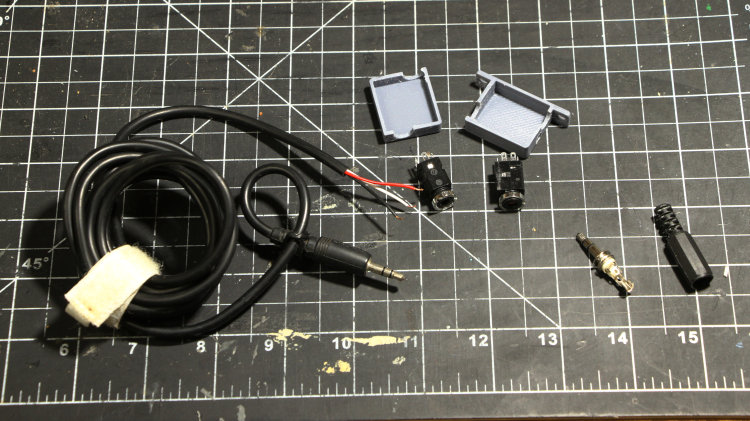
Simple, really: two five-pin 3.5mm sockets (from the five just purchased,) one 3.5mm male plug, some wires, and a housing, which was designed and printed on the 3D printer last night. The housing was about as small as it could get and really should have been just a tad bit bigger, but I made it work.
[There’s another disassembled 3.5mm male plug in there, used just to ensure continuity during soldering – much easier that trying to get a test probe on the proper contacts within a socket.]
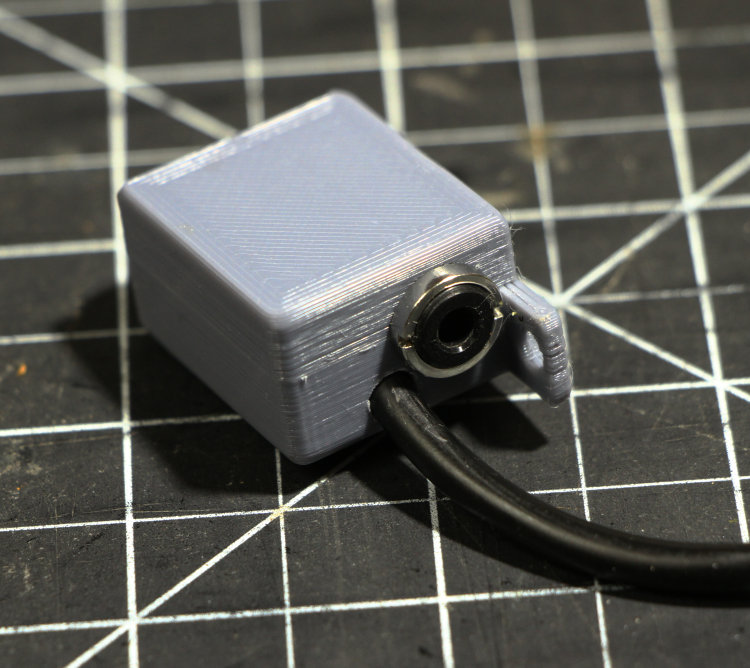
Back view: the wire from the plug that goes into the computer sound card entering, and a socket for the external speaker system alongside.
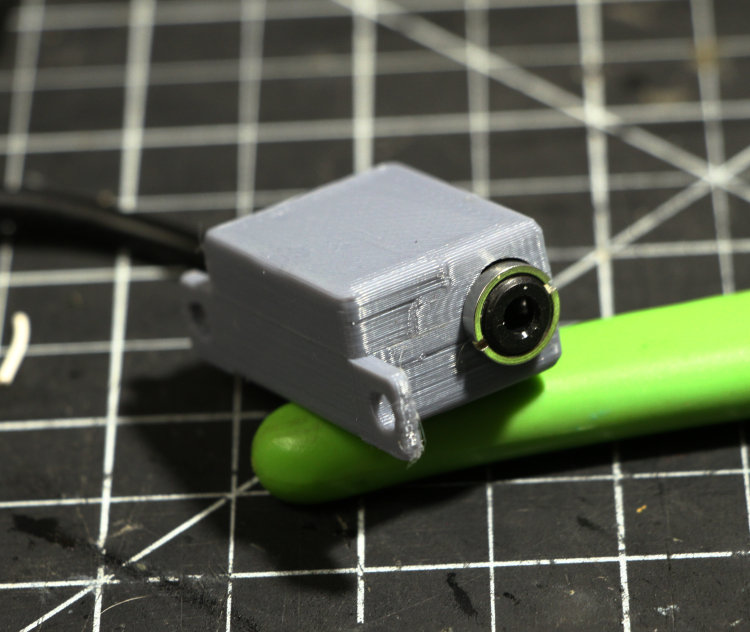
Front view: just the socket for the headphone plug. This is the one that allows or breaks the connection to the speaker socket.
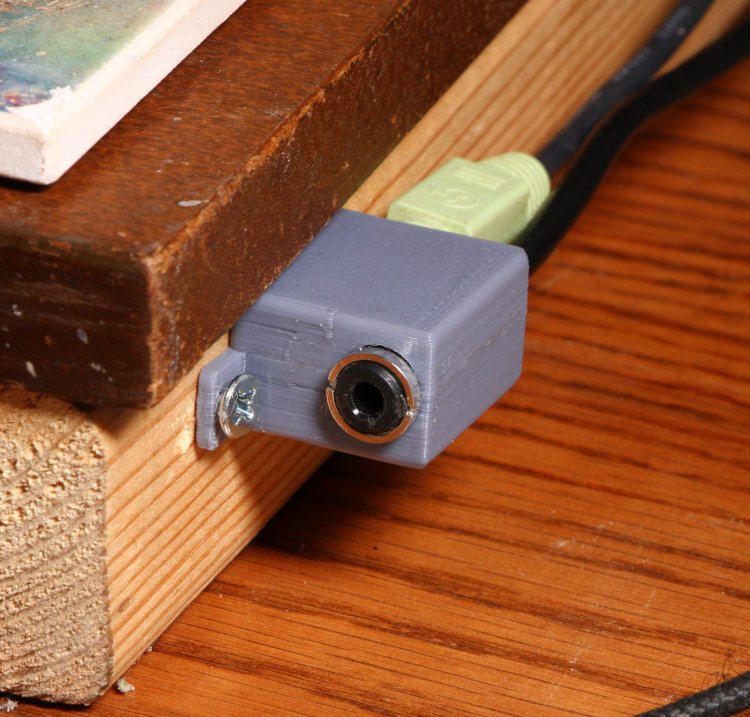
This is in place, mounted to my monitor riser right ahead of the computer mouse, so even more convenient than using the front port of the computer. Yes, my monitor riser is homemade, since I had a very specific clearance before the top of the monitor hit some shelves above the desk.
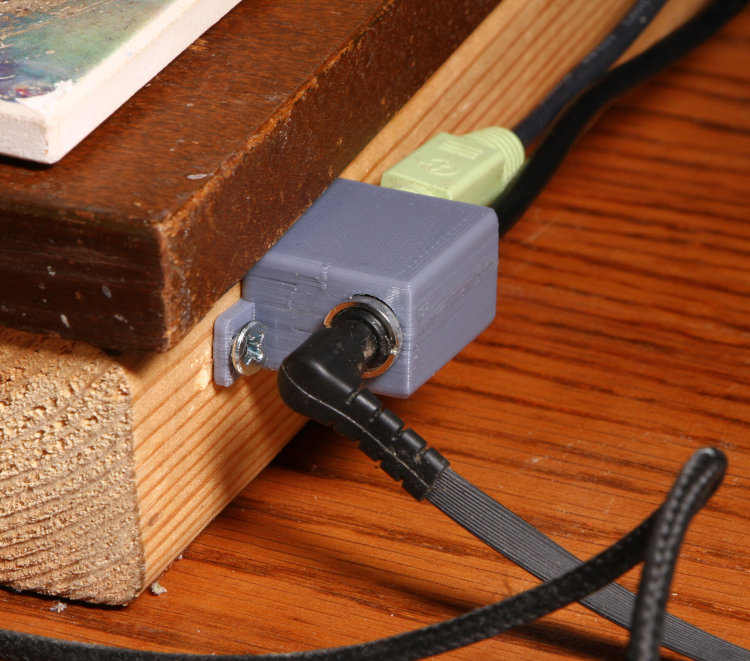
And in use. It works perfectly, and allowed me to switch to a different speaker system with much more appreciable bass (the headphones were already a bass-heavy set.)
All of this had to be completed successfully today, naturally, because it’s International Enough is Enough Day, the day to either finish long-standing projects or realize that they’re requiring far more effort than they’re worth – mine was kind of both. The left channel on the external speakers had been out for well over a year, I believe, and I finally got that settled, only to lose the use of headphones in an unrelated way. At this point, everything’s back to proper working order, and even improved (a better sound card on the computer, better speakers, and a more handy plug for the headphones.) Doing it this way meant that the onboard sound controller on the motherboard is now not being used at all, which is probably good because all other onboard controllers have been pathetic, and I’m using PCI cards for video and network connection as well.
Fascinating, right? Yeah, I’ll be back with more normal typical content soon.



















































